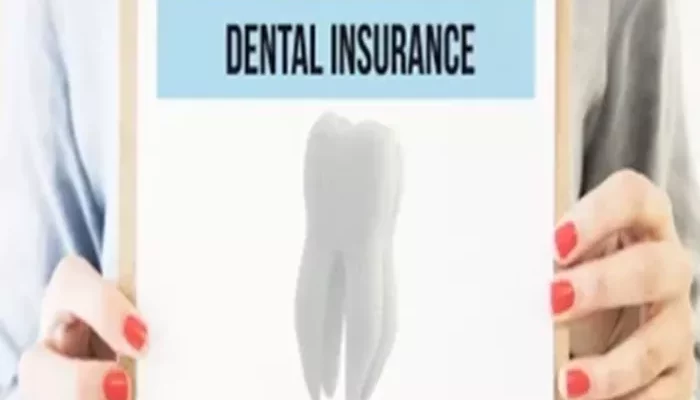Dental insurance can often be a complex subject, filled with jargon and terms that can confuse patients. One such term that you may come across is RTOA. In this article, we will break down what RTOA means in the context of dental insurance, how it affects your coverage, and what you should consider when navigating your dental benefits.
What is RTOA?
RTOA stands for “Reasonable and Customary Charges.” This term refers to the fees that dental insurance companies consider appropriate for specific dental procedures within a given geographic area. Insurance companies use RTOA to determine how much they will reimburse for dental services after a patient has received care.
The Importance of RTOA
Understanding RTOA is crucial for patients because it directly impacts the out-of-pocket costs for dental services. If a dentist charges more than the RTOA for a specific procedure, the insurance company may not cover the full amount. This could leave the patient responsible for the difference.
How RTOA is Determined
Insurance companies typically establish RTOA by analyzing the fees charged by various dental providers in a specific region. They consider several factors, including:
Geographic Location: Dental fees can vary significantly from one region to another. For example, dental services in urban areas may be more expensive than in rural areas.
Type of Procedure: Different procedures have different costs associated with them. Routine check-ups may have a lower RTOA compared to complex procedures like root canals or crowns.
Market Trends: Insurance companies also look at broader market trends to adjust RTOA. This includes changes in the cost of living, inflation rates, and the overall demand for dental services.
RTOA and Your Dental Insurance Plan
When you have dental insurance, it is essential to understand how RTOA affects your specific plan. Here are some key points to keep in mind:
Coverage Limits: Most dental insurance plans have a maximum coverage limit per year. If your dental expenses exceed this limit, you will be responsible for the additional costs.
Deductibles: Some plans require you to meet a deductible before your insurance kicks in. This means that you will need to pay a certain amount out-of-pocket before your insurance covers any costs.
Co-pays and Coinsurance: After meeting your deductible, you may still be responsible for a co-pay (a fixed amount) or coinsurance (a percentage of the total cost) for dental services. Understanding how these work in conjunction with RTOA can help you estimate your out-of-pocket expenses.
RTOA in Action: A Practical Example
To illustrate how RTOA works, let’s consider a hypothetical scenario. Imagine you need a dental crown, and your dentist charges $1,200 for the procedure. However, your insurance company has determined that the RTOA for a dental crown in your area is $1,000.
Here’s how the costs might break down:
Dentist’s Charge: $1,200
RTOA: $1,000
Insurance Coverage: Let’s say your plan covers 80% of the RTOA.
In this case, your insurance would cover 80% of $1,000, which is $800. You would then be responsible for:
Your Portion: $1,200 (dentist’s charge) – $800 (insurance coverage) = $400
What to Do if Your Dentist Charges Above RTOA
If you find yourself in a situation where your dentist’s fees exceed the RTOA, here are some steps you can take:
Discuss with Your Dentist: Sometimes, dentists may be willing to negotiate their fees or offer a payment plan if they know you have insurance.
Check with Your Insurance Provider: Contact your dental insurance provider to clarify how they handle charges above RTOA. They may have specific policies in place.
Consider Alternative Providers: If the costs are too high, you might want to consider seeking treatment from a dentist who charges within the RTOA limits.
The Role of RTOA in Preventive Care
Preventive care is a critical component of dental health, and understanding RTOA can help you maximize your benefits. Most dental insurance plans cover preventive services, such as routine check-ups and cleanings, at 100% of the RTOA. This means you won’t have to pay anything out-of-pocket for these services, provided you see an in-network provider.
Choosing the Right Dental Insurance Plan
When selecting a dental insurance plan, it’s essential to consider how RTOA will affect your coverage. Here are some tips to help you choose:
Review the Plan’s RTOA Policy: Each insurance plan may have different RTOA policies. Make sure to read the fine print and understand how RTOA is calculated.
Evaluate In-Network Providers: Choosing a dentist who is in-network with your insurance plan can help you avoid higher out-of-pocket costs. In-network providers typically charge fees that align with the RTOA.
Consider Your Dental Needs: If you anticipate needing extensive dental work, look for a plan with higher coverage limits and lower deductibles.
Conclusion
Understanding RTOA in dental insurance is vital for making informed decisions about your dental care. By knowing how RTOA affects your coverage, you can better anticipate your out-of-pocket expenses and choose the right dental insurance plan for your needs. Always communicate with your dental provider and insurance company to ensure you have a clear understanding of your benefits and responsibilities. With this knowledge, you can take charge of your dental health and financial well-being.
If you have any further questions about RTOA or dental insurance in general, feel free to reach out to your insurance provider or dental office for more details. They can provide specific information tailored to your situation, helping you navigate the often-complicated world of dental insurance with confidence.
Related topics:

